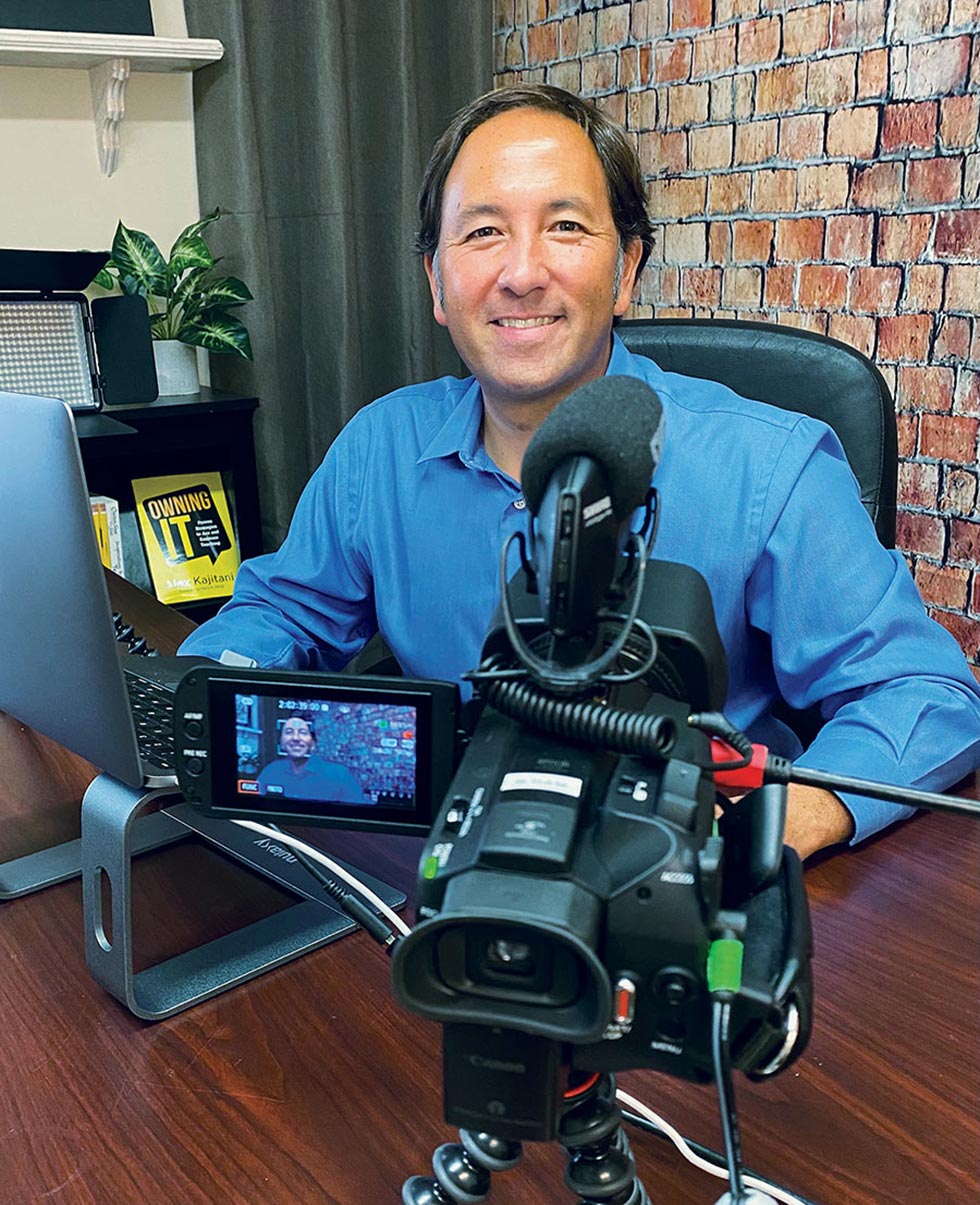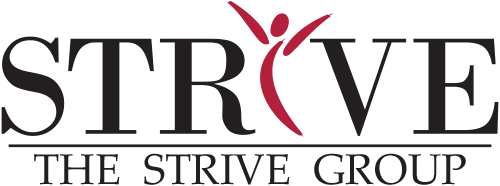






I cannot imagine a more complex time to lead a business. I have been saying this for many years now. Yet, somehow, each new year manages to deliver the previously unthinkable along with escalating levels of complexity with which to contend. What’s more, this trend toward the increasingly complex shows no sign of abating. How do we respond? As entrepreneurs.
Entrepreneurism is often romanticized for its creative, independent, and risk-tolerant cachet. And of course, when things go well, for its economic rewards. However, hidden beneath the bravado of this veneer is the reality of the experience. The fact is that entrepreneurism is a perpetually uncomfortable journey devoid of guarantees. This is because entrepreneurs don’t seek structure; they seek to create it. To do so, they must become comfortable with the ficklest and most unforgiving of companions: uncertainty. Every day they wager effort, money, reputation, and self-esteem backed only by their vision, intellect, and tenacious personal conviction that they can create something better. Not only for themselves, but for those who will follow.
Contents
Rick Thomas
Editor
Nance Larsen
Cover Story Photo
Tonya Harvey
pbth.net
Visualizer
Scott Mlynarczyk
The STRIVE Group, LLC
thestriveproject.com/subscribe
Copyright © 2022
The Strive Group, LLC
All rights reserved.
n today’s media landscape, misinformation runs rampant, local news is declining, and polarization is on the rise. In addition, large corporations obsessed only with increasing profits are absorbing smaller outlets at an alarming rate. At times, the future of all news and information can seem bleak due to the damaging homogenization of operations, but new models are emerging. For example, collaborative networks that focus on solutions-based journalism are prioritizing communities and revolutionizing news media. That benefits reporting and the bottom line.
Collaboration is integral to the health of news and the health of democracy. I believe we must foster partnerships that reach across institutional, organizational, and societal boundaries to tackle complex problems with creative solutions.
hose were the last words I said to the principal at North High School in Annapolis, Maryland in March of 2020 as the school doors were being locked. I had been coaching a group of teachers on the best ways to teach math when we received word that schools across the district were closing their doors due to COVID-19.
Of course, “schools across the district” soon became “schools around the world,” and teaching as we knew it was about to change forever. As students were sent home for who knows how long, millions of teachers around the world scrambled to figure out how to teach online.
Sure, some teachers had been teaching online long before the pandemic, but never before had we all been teaching online. Some teachers jumped in with enthusiasm. Others resisted. But together, we were all tasked with navigating this new world and embracing its possibilities.
We started with the question, How do we take the old reality of teaching and put it on Zoom? But it soon became clear that we needed to be asking a different question: How do we build a new online teaching reality where students can thrive—from wherever they are?
Wanting desperately to help, I decided to try to reach those kids and parents as quickly as possible. I scrambled to create what I called The Wacky Math Show—a free, weekly, live Zoom class that anyone could join. Being one of the first teachers to offer something like this, I had the terrifying pleasure of working out some major kinks early on. (Who knew, at the time, that students would immediately figure out how to draw on the teacher’s screen?!)

hose were the last words I said to the principal at North High School in Annapolis, Maryland in March of 2020 as the school doors were being locked. I had been coaching a group of teachers on the best ways to teach math when we received word that schools across the district were closing their doors due to COVID-19.
Of course, “schools across the district” soon became “schools around the world,” and teaching as we knew it was about to change forever. As students were sent home for who knows how long, millions of teachers around the world scrambled to figure out how to teach online.
We started with the question, How do we take the old reality of teaching and put it on Zoom? But it soon became clear that we needed to be asking a different question: How do we build a new online teaching reality where students can thrive—from wherever they are?
Wanting desperately to help, I decided to try to reach those kids and parents as quickly as possible. I scrambled to create what I called The Wacky Math Show—a free, weekly, live Zoom class that anyone could join. Being one of the first teachers to offer something like this, I had the terrifying pleasure of working out some major kinks early on. (Who knew, at the time, that students would immediately figure out how to draw on the teacher’s screen?!)
n 2015, I became a yoga instructor, and I was trained to recognize when my students were getting uncomfortable. I’d see them with strained faces, fidgeting in the longer poses. Some suddenly needed an urgent sip of water; others simply sat down. Granted, I taught a rigorous style of vinyasa yoga in over 100-degree heat. Sometimes you just need a break.
But there’s a difference between pausing for replenishment and escaping for relief. Those moments when my students felt discomfort presented a choice: stick with it and get stronger or abandon the moment and stay the same.
Why is it that when something gets uncomfortable our first instinct is to run? Our ego interprets any discomfort, no matter how small, as pain and wants it to disappear as quickly as possible. This is a primal reaction that was useful before modern medicine, technology, and today’s luxuries.
see the word “collaboration” getting tossed around a lot—employers are constantly encouraging employees to collaborate and work as a team. The interesting part, in my opinion, is that while people might be working together, they aren’t actually contributing to meaningful collaboration. True collaboration requires a different approach and a different mindset.
The importance of collaboration in the workplace has never been greater. Our ability to connect with coworkers has changed; thus collaboration has changed as well.

ho would have thought that a global pandemic could prove in two years what I’ve been saying for 25 years? It’s been a journey. Fresh out of college, I took my first job working for a small video conferencing integrator in 1997. As a marketer, it was my job to communicate how video conferencing technology offered a new method for working from anywhere. I studied market trends, sought innovative use cases, and interviewed countless customers in the healthcare, government, and education markets. However, it wasn’t until after my first child was born that I personally tried “teleworking” (that’s what we called it in the ‘90s). It was then that my eyes were truly opened to the power and potential of video conferencing to offer new ways of working that optimize productivity while improving one’s quality of life. Fast forward 25 years and a global pandemic and my passion for researching and sharing how technology can transform how work gets done while attracting top talent has only deepened.

ho would have thought that a global pandemic could prove in two years what I’ve been saying for 25 years? It’s been a journey. Fresh out of college, I took my first job working for a small video conferencing integrator in 1997. As a marketer, it was my job to communicate how video conferencing technology offered a new method for working from anywhere. I studied market trends, sought innovative use cases, and interviewed countless customers in the healthcare, government, and education markets. However, it wasn’t until after my first child was born that I personally tried “teleworking” (that’s what we called it in the ‘90s). It was then that my eyes were truly opened to the power and potential of video conferencing to offer new ways of working that optimize productivity while improving one’s quality of life. Fast forward 25 years and a global pandemic and my passion for researching and sharing how technology can transform how work gets done while attracting top talent has only deepened.

Cultivating these environments is the responsibility of supervisors and managers.
• Foster relationship building • Develop empowered teams • Enable performance
• Improve communications and generate engagement • Establish a productive virtual work environment for all
- Creating and Enabling an Effective Remote Workforce
- Managing Virtual Teams
- Leading People through Challenge and Change
- Accountability on Remote Teams
- Safety Matters, Even Remotely
- Using Brain Science to Maximize Your Effectiveness Leading Remotely
- I Can Do It!
- Communicating Effectively Over Distance
- Facilitating and Mastering Effective Virtual Meetings
- Tips to be Effective and Productive While Working from Home
- Maintaining Mental and Emotional Wellness Through Challenging Times
- Using Brain Science to Maximize Your Effectiveness Working Remotely
Successful Environments
- Creating and Enabling an Effective Remote Workforce
- Communicating Effectively Over Distance
- Facilitating and Mastering Effective Virtual Meetings
- Tips to be Effective and Productive While Working from Home
- Safety Matters, Even Remotely
- There’s an App for That
training.thestrivegroup.com
Classes now available on The Chariot Group’s Online Marketplace. Learn More
ollowing several centuries of rapid increase, demographers predict that the human population will peak in the 2060s and then begin to decline. As of 2020, population aging and decline is already under way in 25 countries.
I’m an urban planner, which means I’m the product of a field that developed to manage rapidly growing cities. If our collective future is going to involve shrinking, what does that mean for how we structure our cities and our economy? It’s a question that hasn’t seen nearly enough airtime, which is why I spent 15 months in Japan in 2020 and 2021 as a Council on Foreign-Relations Hitachi Fellow searching for answers.
Shrinking cities (and towns and villages) are a national issue in Japan, which hit “peak people” at 128 million in 2008. Since that point, deaths have exceeded births. Government projections estimate that Japan’s population will decline by about 30 percent by 2065 to 82 million people, or the size of Germany today.
In my quest to learn how shrinking municipalities are preparing for older, smaller futures, I visited cities, towns, and villages, interviewed local officials and organizations, and read local and national government plans. Most of the municipalities I visited had been losing population for decades, and many had shrunk by 50 percent or more from their peak.

Meaningful lives are enabled by a clear purpose, but for decades I had not fully appreciated my purpose.



Meaningful lives are enabled by a clear purpose, but for decades I had not fully appreciated my purpose.
or nearly two decades, I was convinced I would die before my 50th birthday. I was not sick, nor had I learned from a carnival prophet that my life was soon ending; rather, the women in my family die young and I had no faith I would be different.
I spent quite a bit of the years leading up to my 50th preparing for my ultimate demise. I didn’t know how death would greet me, but I was certain it would come, and I acted accordingly. I took the time to write instructions regarding my retirement, life insurance, mortgage, etc. I always made sure there was a second person at work keenly aware of the status and other details of my assignments and projects. I consistently organized, labeled, and/or discarded items in closets, the garage, etc. I selected the music for my funeral and made sure my dear friends knew of my wishes.

grew up in a small town in Israel. Or at least it felt like a small town—Be’er Sheva is actually the second-largest city in Israel, though it always had a small-town vibe, and not necessarily in a good way. I used to be embarrassed telling people I was from Israel’s desert town. They often posed silly questions, such as, “What did you lose there?” Or, “Do you ride camels to school?” Or they would say, “You don’t look like you’re from Be’er Sheva,” as if they expected its locals to look a certain way.
I have distinct memories of life in Be’er Sheva. Simply put, it was boring—a tired town. No exciting attractions, not enough activities, and not enough places to hang out and meet new people. Everyone knew everyone, and it was the same old, same old. As someone always looking for thrills and new adventures, I realized early that I wasn’t going to find excitement in my hometown and started looking for ways out—the sooner the better.
id you know that the Hawaiian Islands are the most isolated land mass in the entire world? Hawaii is approximately 2,390 miles from California and a five-hour flight to Los Angeles. The next nearest land mass to the Hawaiian Islands is Japan, approximately 3,850 miles away and an eight-and-a-half-hour flight to Tokyo.
You might think that’s interesting, but what does it have to do with anything? That’s what I thought until mid-March of 2020 when my business, a thriving vacation rental company located on the island of Maui in the Hawaiian Islands, went from having the best start in our 10-year history to the worst, all in a matter of a few weeks.
The demise began on March 17, 2022, when our governor strongly encouraged visitors to postpone their vacations and not travel to Hawaii due to the unknowns associated with COVID-19. For anyone who depended on tourism for their livelihood, these words were ominous. A few days later, the governor issued a mandatory statewide stay-at-home/work-from-home order, upending life as we knew it. On March 26, 2020, the first day that the State of Hawaii implemented its mandatory 14-day self-quarantine for all incoming passengers, reality set in. The state had a total of 1,589 passengers arrive to the islands—only 268 were visitors. By comparison, in March of 2019, more than 30,000 passengers arrived in Hawaii daily. By the end of the March 2020, any tourist who was on the island had left for fear they would be stuck in the middle of the Pacific. The beaches were empty, the restaurants were closed, and our island was at a standstill.
Content, Distribution,
and Ground Squirrels
his may not come as a shock to you unless you live under a rock, but video is everywhere— YouTube, Facebook Live, TikTok, Netflix, Hulu, etc., etc., etc. Video is, of course, used to entertain, educate, and eradicate—sorry, I couldn’t resist the alliteration because as I write this article I am also trying to eradicate some ground squirrels. Of course, video consumption has its roots in video creation followed by video distribution—mainly streaming. Hang on to this thought because it’s the premise for my diatribe.
Scour the internet and you can’t help but find statistics that validate what you (and I) are doing, namely, turning to video when we need something. Why is this? Well, it comes down to biology. Ninety percent of information transmitted to the brain is visual, and the human brain processes images 60,000 times faster than text. Wow, that’s a heck of a statistic! But not so fast… What I find interesting is that, while this stat is quoted all over the internet, no one can actually find the true source of the information. But it sounds great, doesn’t it, and it is probably based in reality. And truly, we can all believe it because when we need to do something, like eradicate ground squirrels, we turn to YouTube.
Our consultants are passionate about
helping you and your business move forward.
Our Services
LEADERSHIP
- Assessments
- Coaching
- Succession Planning
WORKFORCE
- Training/Workshops
- Coaching
- Team Building
ORGANIZATIONAL
- Business Consultation
- Strategic Planning
- Policies & Procedures
Remote Empowerment
- Virtual/Remote Environments
- Efficiencies & Engagement
- Leveraging Technology

907.2.STRIVE
Compliant
Sustainable
Comprehensive
Connecting people and ideas. Specializing in group communication collaboration technologies, whether in person, over distance or in combination.
www.chariotgroup.com/online-marketplace
info@chariotgroup.com | 877.822.5300 | www.chariotgroup.com

Thanks for reading our Jul-Sept 2022 issue!


































 SPEED
SPEED SPEED
SPEED